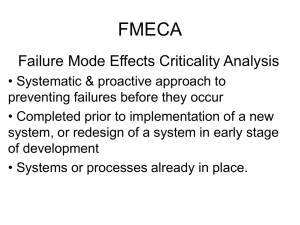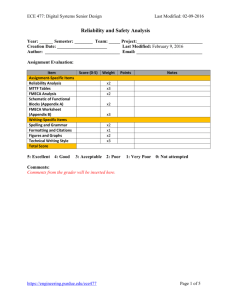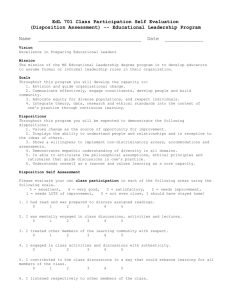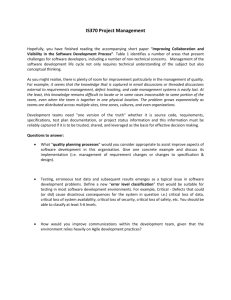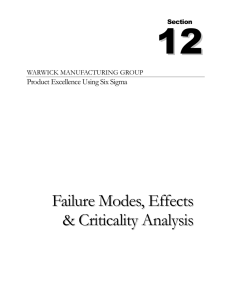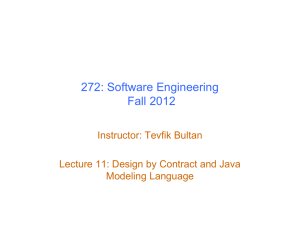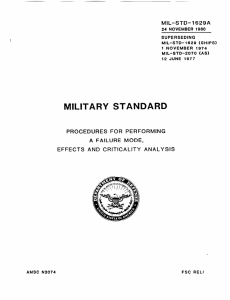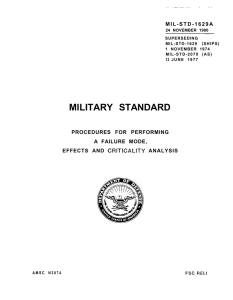Mechanical Engineering and Mechanics MEM 361 Engineering Reliability
advertisement
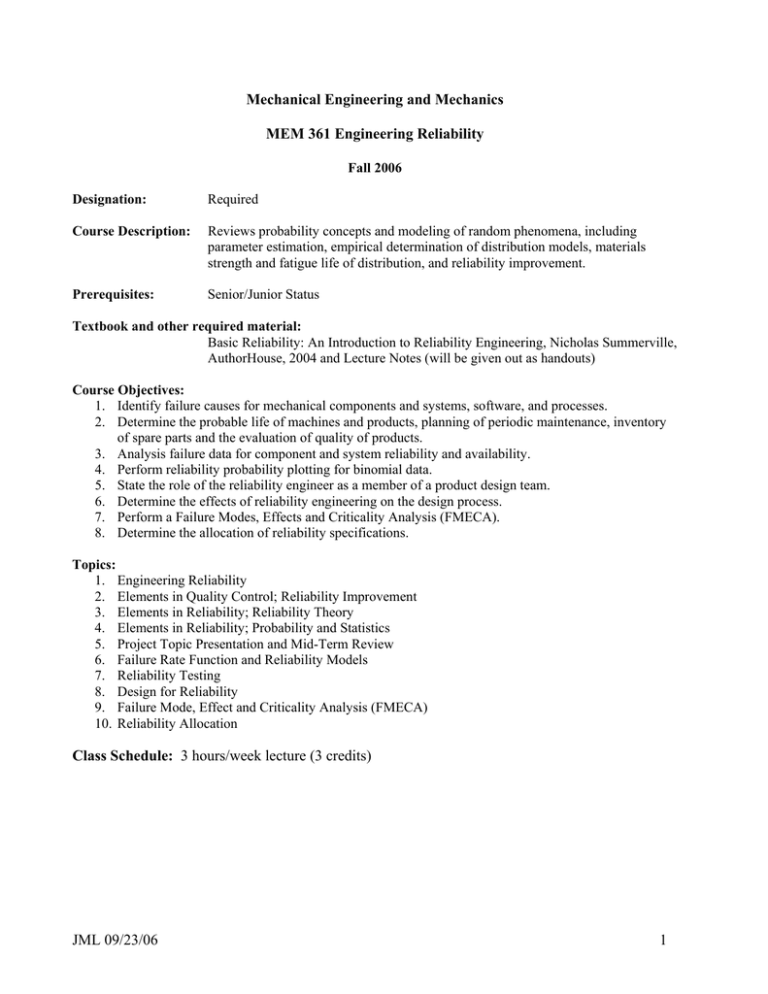
Mechanical Engineering and Mechanics MEM 361 Engineering Reliability Fall 2006 Designation: Required Course Description: Reviews probability concepts and modeling of random phenomena, including parameter estimation, empirical determination of distribution models, materials strength and fatigue life of distribution, and reliability improvement. Prerequisites: Senior/Junior Status Textbook and other required material: Basic Reliability: An Introduction to Reliability Engineering, Nicholas Summerville, AuthorHouse, 2004 and Lecture Notes (will be given out as handouts) Course Objectives: 1. Identify failure causes for mechanical components and systems, software, and processes. 2. Determine the probable life of machines and products, planning of periodic maintenance, inventory of spare parts and the evaluation of quality of products. 3. Analysis failure data for component and system reliability and availability. 4. Perform reliability probability plotting for binomial data. 5. State the role of the reliability engineer as a member of a product design team. 6. Determine the effects of reliability engineering on the design process. 7. Perform a Failure Modes, Effects and Criticality Analysis (FMECA). 8. Determine the allocation of reliability specifications. Topics: 1. Engineering Reliability 2. Elements in Quality Control; Reliability Improvement 3. Elements in Reliability; Reliability Theory 4. Elements in Reliability; Probability and Statistics 5. Project Topic Presentation and Mid-Term Review 6. Failure Rate Function and Reliability Models 7. Reliability Testing 8. Design for Reliability 9. Failure Mode, Effect and Criticality Analysis (FMECA) 10. Reliability Allocation Class Schedule: 3 hours/week lecture (3 credits) JML 09/23/06 1 Contribution to Professional Component: MEM 361 contributes to the core technical skills of Mechanical Engineering Students. This course provides students with foundation knowledge in the areas of reliability in design, reliability predictions and modeling, the analysis of reliability data for mechanical components and systems, electronic systems, software, and processes. Prepares students for classes in product design, materials, and life-cycle support. RELATION TO PROGRAM OUTCOMES: 0 = No content; 1 = Some content; 2 = Significant content Outcomes a - k a. An ability to apply knowledge of mathematics, science and engineering b. An ability to design and conduct experiments as well as to analyze and interpret data c. An ability to design a system, component or process to meet desired needs d. An ability to function on multidisciplinary teams e. An ability to identify, formulate and solve engineering problems f. An understanding of professional and ethical responsibility g. An ability to communicate effectively h. The broad education necessary to understand the impact of engineering solutions in a global/societal context i. A recognition of the need for and an ability to engage in lifelong learning j. A knowledge of contemporary issues k. An ability to use the techniques, skills and modern engineering tools necessary for engineering practice JML 09/23/06 Conte Explanation 2 This course requires the students to develop a general understanding of applications of probability by applying their knowledge of mathematics, science, and engineering. 1 A demonstration of real life data to educate the students to learn the notion of reliability, and how real life is not a text-book case. 1 The assigned design problems are always required to meet societal or industrial needs. 1 The course emphasizes the requirement for multidisciplinary teams to determine failure modes and their effects and the in the selection of reliability improvement methods 2 The problems and project require students to identify, formulate and solve engineering problems. 2 This is emphasized as part of the Engineer’s overall responsibility. 1 Written presentation of the final design problem is required. 2 The impact of engineering design on the environment (pollution, greenhouse effect, etc.) and society are covered. 1 Students are taught to understand that situations change. 1 The course covers new tools technique used in reliability engineering 1 Computer packages are used to explore the solution domain for homework and the design project Evidence Homework, Exams, Design Project Final report for the design project; Classroom example and homework problems Final report for the design project Classroom work, homework problems and final report for the design project Homework, exams, design project Discussions in class Final report for the design project Classroom discussion of environmental issues; Final report for the design project Class room discussions and notes. Classroom discussions, demonstrations and Homework; Final report for the design project 2
